"Simplifying working routines"
Case Study: Optimisation project during the pandemic
Feb 3, 2021
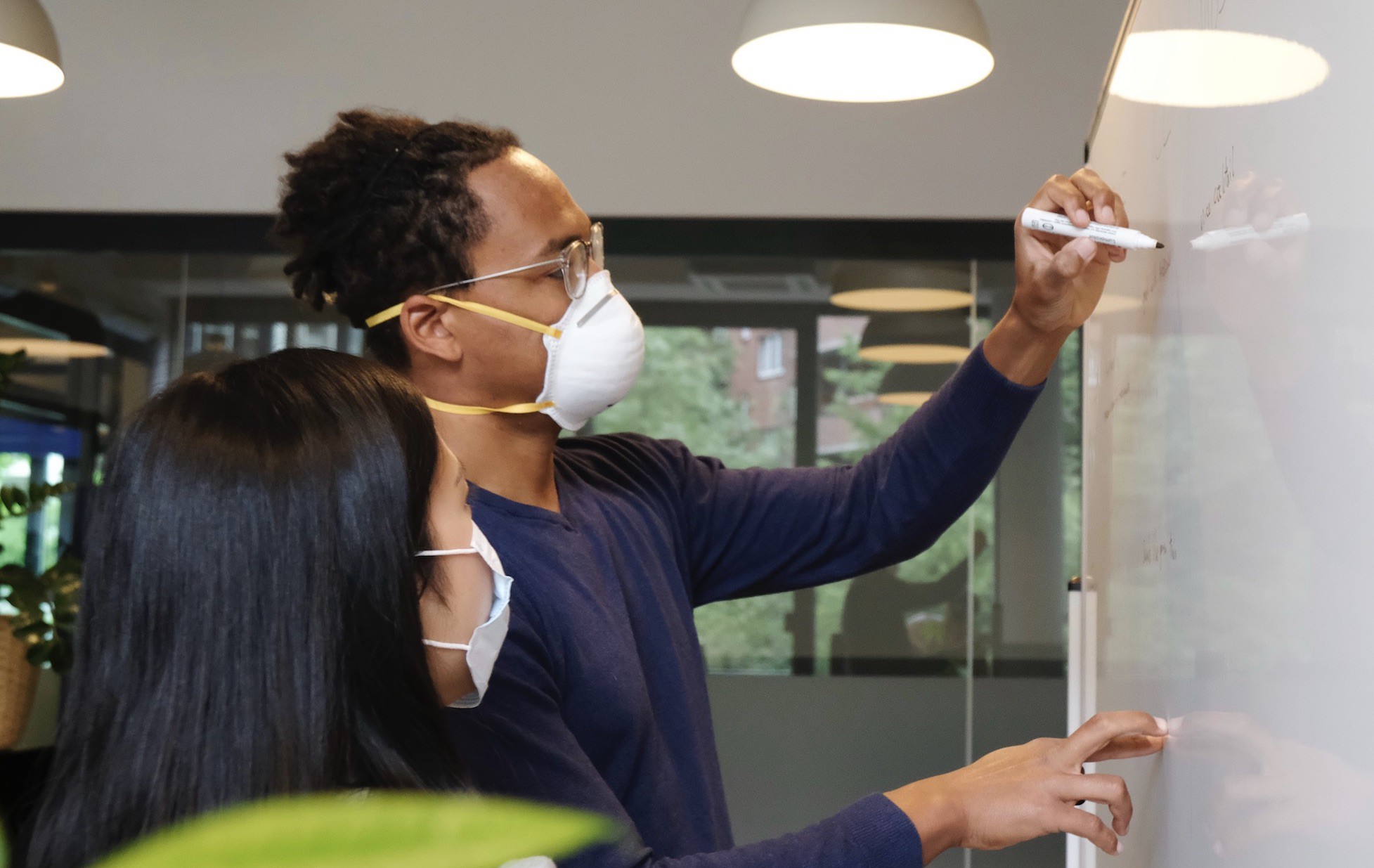
Introduced by Peter Röhrig
Before this review process, I knew Sieds already as a very experienced Solution Focus (SF) conflict manager who generously shared his ideas with the few other colleagues and me in the community working specifically in conflicts. Now I got to know Sieds from another perspective of his rich professional practice – as a masterful organisational developer in his specialised field of Mental Health Care in the Netherlands.
From the beginning of the process, I realised the special challenge of reviewing a Piece of Work from such a sophisticated practitioner. My focus was more on SF clues regarding the attitude and overall stance of working – and the resonance with clients that resulted from that – than to look at SF clues in applying tools and methods. So, what impressed me most was the strong SF spirit Sieds brought to the process – which turned out to be highly infectious not only for the participant’s engagement in the workshops and meetings but also for their everyday work. Sieds created an atmosphere of fun and energy in an institution suffering from a crisis – so much that the mental health workers became enthusiastic to use SF with their patients.
There was remarkable feedback from the clients in the clinic. They emphasised the open-minded listening to the workers' needs and expectations and building efficient workgroups, with improvements from the start and good results at the end of the change process. Even the managers in the headquarters, who seemed sceptical initially, conceded that they learned a lot in this case and saw clear benefits from the cooperation.
Last but not least, Sieds impressed me with his endless devotion to life-long learning. In this respect, I feel even more connected to him and his work than before the review process.
The Article
The Project, the Description and the Desired Outcomes
In April and May 2020, we did a wonderful project at MentalHelpers Ons Dorp. They asked us if the psychiatric clinic’s working routines (mainly ambulatory, not clinical) could be simplified, be more fluent and easier for workers and patients to change. Getting that the chance for better results and outcome could be much bigger than before the project.
We agreed with the central and local management about our way of working and convinced them about our approach and working style. The convincing element of our presentation and our pitch was that we told them we:
- do not work with blueprints of a central firm; we use the expertise of the workers themselves
- would not start with Six Sigma and Lean procedure stuff, but we would start by questioning a selection of workers (staff, management, workers, secretaries, nurses and more).
We agreed to start with a six-week period in which we would do the interviews and three workshops. After that, we planned an evaluation to see if we had made progress and go further for more detail and more results. This project is about six weeks, ending in May 2020.
A short introduction: The start
In 2019 we had our start of a new company, called Brainprofs (www.brainprofs.com). Twelve men and women started this new company to believe that we would like to change traditional consulting with companies. It began as an initiative by me after talks with Sue Lickorish and Chris Bond on the Liverpool Conference in 2016. We believe that change in organisations will meet less resistance and build more resilience if we take the teams and the working community as the best experts in their work and working routines.
We marketed this belief in the consultancy world and found a great appreciation for this idea. So, we were successful in business and had good marketing all over the country. We are involved in business, in health care, in government and NGO’s. So, we do our work in business consultation, in conflict mediation, in talent and team-coaching, in interim management and our position as a Board Member. In 2019 we decided to share our efforts in the field of Healthcare. We did meet some senior consultants at a big Health Insurance Company in the Netherlands (Menzis), and we found good attention for the idea and the concept that we shared.
The intriguing idea was that we could be of importance to a big problem in the Netherlands, i.e. long waiting lists for patients in psychiatric care. This issue is seen as one of the worst in Dutch health care. And many consultants have been asked for improvement. But no one seems to make real progress. We think that this effect originates in a very “blue” (analytical, rational) way of working. Menzis had a belief in our concept, and we looked for an institute together that was willing to work with our concept. That institute was a big organisation (MentalHelpers/ over 2500 workers) and Central Management became enthusiastic for our concept. We decided to start locally with a pilot project. The Insurance company funded the investment.
A second introduction: the follow up in Ons Dorp
It was challenging to find a suitable location (clinic) for our pilot project. Our approach was very new, and some locations were already involved in change. Finally, the choice was Ons Dorp. A relatively small clinic with 65 staff members and about 1000 patients per year.
We made our acquaintance with the management and the administrative department, and we found enthusiasm and support for our project.
I was very satisfied with this location because we could focus on another problem as well - a big gap between the “local” workers and the “central” workers. We liked it because it could give the local workers the feeling that they could influence their department as their workplace.
Our introduction in practice: The first meeting
In our first meeting with management and workers (April 2020), we told all 12 participants about the way we work, our experience and our belief in continuous improvement by better participation and the prospect of desired change. We found consent on our style and the global and possible outcomes. They liked the idea that I was very familiar with their practice (I have been a psychologist and manager in this field for many years), but I also tried to emphasise that I wanted to work in a not-knowing attitude. I am not the expert; they are.
We made good arrangements on the planning of participation for the interviews and the workgroups for April and May 2020. Because of the Coronavirus, we had to do all our work by video-interviewing and conferencing. Not my choice, but we really did want a quick start.
A more specific description of the desired outcome by the management
We asked the managers what they would like to be the best outcome. Their best practical description for the result of this pilot project was: They wished to:
- Improve their entrance routing for clients
- Improve their registration and administration for clients
- Improve and have better congruency in their patient flow for all teams
- Improve their meetings (participation, atmosphere and flow )
- Have the best outcome and flexibility of their internal routing for patients
So, the definition of the outcome was a better patient flow and a better system for registration. The standard way in MentalHelpers to improve the patient flow is to make LEAN/ Sigma descriptions of the flow in diagrams, following routines, triangles and decision points. To start there and to wait and see what will show up. Then you will find the artefacts in the pathway, and the improvement will follow by setting up good decisions.
When they heard us and our approach, they knew that we would favour another way; the SF way. They saw the benefit, but there was a lot of questioning about getting hard and tough results. Still, we promised them more participation, more ideas and a great result.
The Interviews and Workgroups
The interviews
After the preparations, we made the real start. In this chapter, you will see the way we worked, the results, the pathway and our values. I believe they are strictly SF. Only in the workgroups was there some influence from other disciplines in drawing diagrams and mindmaps. But really, 90 % of our work was real SF work.

The interviews were, because of Coronavirus, on Zoom. We had about 15 interview sessions of 1 hour with several employees of every discipline. I did the questioning (mostly) and my colleague Rob gathered and documented ideas and results. After the interviewing, we saw this promising pattern. Everyone was enthusiastic about the project and wanted:
- real change
- better meetings
- help in working with the Registration System
- more approval by the management
- more disciplinary ways of participation in meetings
They were highly motivated to make some change and very astonished by the level of competency and talent in their team.
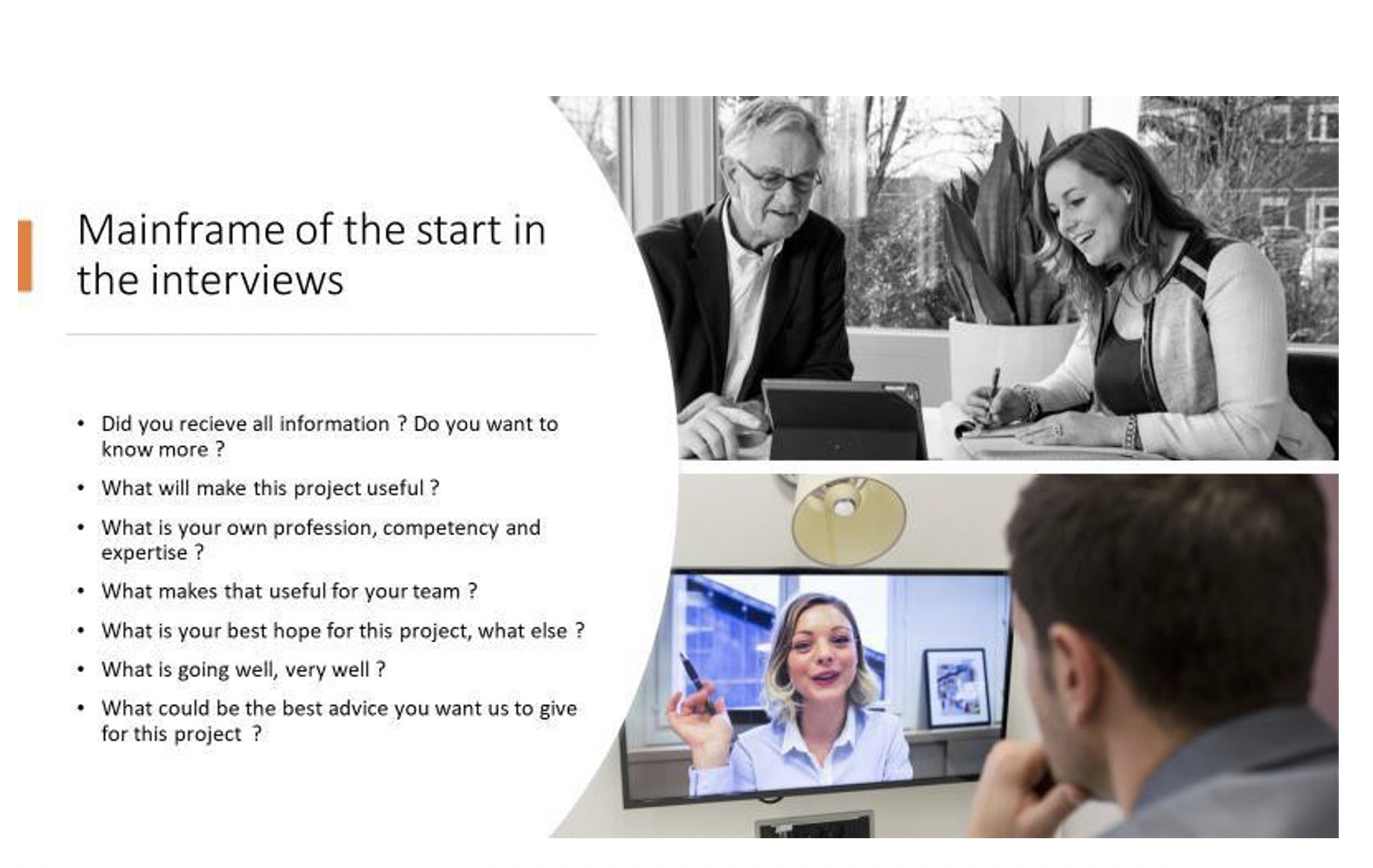
Resources, qualities and competencies
All work in SF starts with finding resources. At the beginning of the route with our team members, we really like to find the best competencies and qualities of the workers. Because all the interviews were on Zoom, we could do this part only verbally. However, even within these limitations, the harvest was huge. We really did get a lot of competencies that we could use later when we wanted to talk and go on about the strength in the organisation, e.g. ‘being rational’; ‘team player’; ‘power’; ‘belief’; ‘cooperation’; ‘decisive’; ‘leadership’; ‘charisma’; ‘innovation’; ‘being tough’; ‘knowledge’; ‘teammate’ and many more.
In this part, we found an eagerness to learn; a willingness to cope with the central department; being prepared to innovate; a good client approach; awareness of the client; persistency on improvement; and more. When you collect all these resources, the possibilities will arise for change. As you can see in the mainframe slide we started questioning the expectations for the future (let us say after 10-20 minutes) by using Haesun Moon’s Dialogic Orientation Quadrant
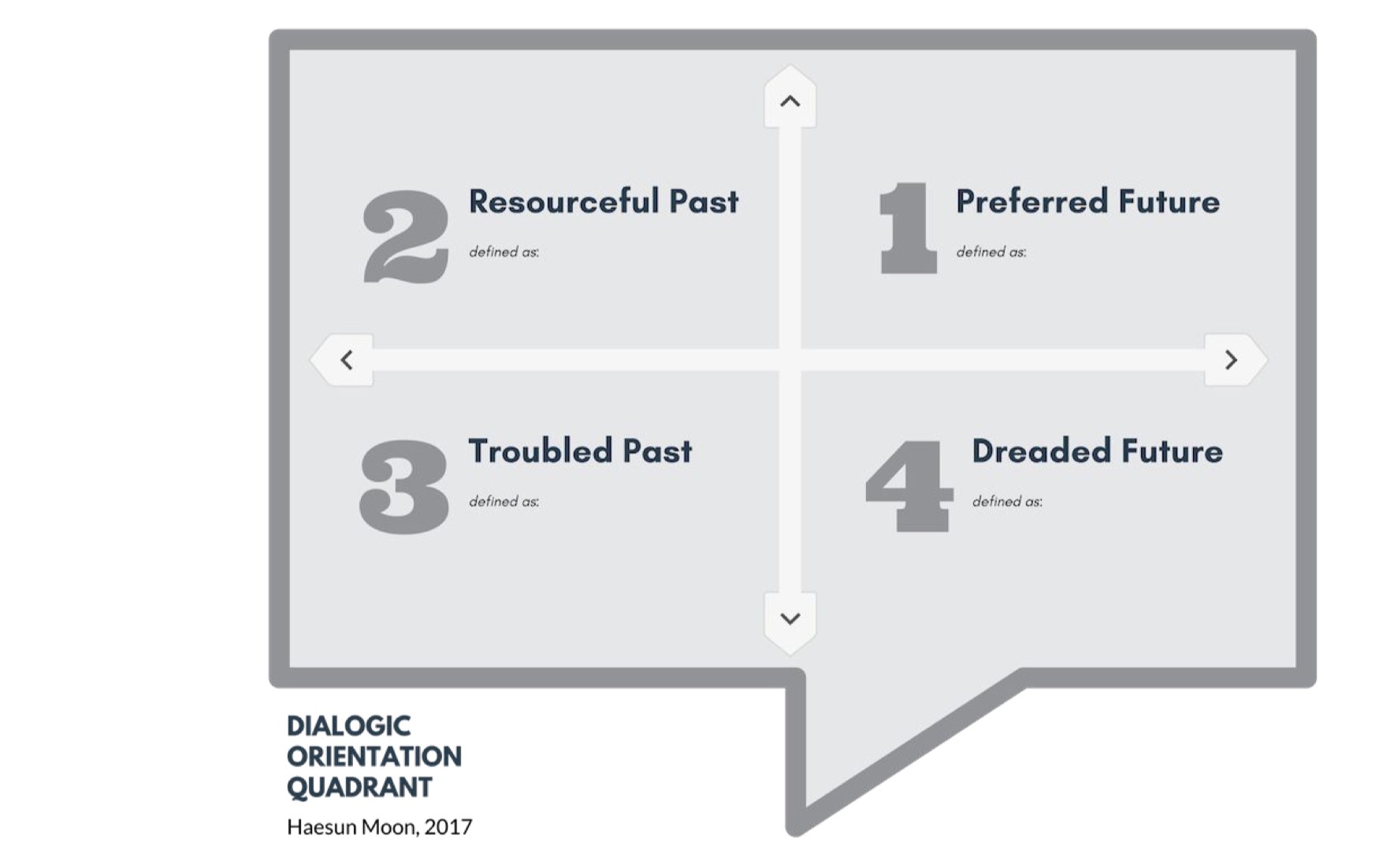
This questioning part was very satisfying and had a great outcome.
I have some additional remarks on the lower half of this scheme (the Painful Past and the Feared Future). To encourage solution talk, you can alter the tone of your questions or rephrase the questions in an SF way. My experience is that when you can give it the right touch, people like to talk for a short while about the past. Not in a dark way but in contrast to the future. Because of my experience using those questions, this problem never occurs, but it could happen without that.
At the end of all interviews, we asked for an evaluation of the talk, checking whether the interviewee wanted to add something, their level of satisfaction, comfort and safety. The results showed that everyone was very happy with the talk. They felt it as an encouragement for more. They could not wait to go in and have discussions with the team. We found no differences based on the origin, profession or discipline, only satisfaction and enthusiasm.
Collecting and rephrasing the interviews
All the Interview were “taped” or noted on paper by Rob. We became very enthusiastic. We heard before from some management members that this location was “always in opposition” or “not constructive”. That was not how we felt. We discovered real quality, real competency, the willingness to move and no resistance. So this start had become promising, positive and with a need to move on.
The 3 Workgroups (May 2020)
In the second phase, we began working with the group and uncovered more possibilities for sharing and dealing with changes in their daily routines. In this part, I assisted Roland and Lucas, who are very professional in LEAN Kata, diagrams and more. But the talks themselves followed the same SF “style”. Solution talk, instead of problem talk. All our Brainprofs colleagues followed the SF course John Brooker gave in 2019.
There were two workgroups for ideas to improve ‘more and better’ and one workgroup to establish the best agreements on Registration, Administration and Caseload for every professional.
In this phase of the project, we needed more focus than during the interviews. We had to focus on stages in the process, hiccups in the routine, the way of talking during the meetings. But the motivation to participate, to decide and to agree was already established. That was a huge advantage. Everybody was willing to talk and to participate. Change was wanted, not rejected. We think due to the SF way of working. So much more inspiring than the traditional LEAN/ Sigma route!
The harvest was significant. We used brown paper to illustrate the schemes and working routines. As mentioned earlier, we used the following routine for the workgroups:
Two specific parts of the Workgroups, finding the best future :
The workgroups were planned for 5 hours in 1 day, from 0900 to 1200 and 1400 to 1600. We always started with some team-meeting on the Haesun’s Question Matrix. We did not use miracle questions; we wanted a rich picture of the future.
The questions involved were similar to the questions in the interviews. Before that, we summarised the harvest in the first interview round.
This approach gave good results in the workgroups. They wanted change, ending old routines was possible, they discussed good changes in the past, and the pain of earlier change could be avoided. Later, during our evaluations, we found that the real accelerator to change. We did some exercises with the Team Impetus cycle, and the result came with more impact on everybody. The cycle formed from the individual to the collective realisation!
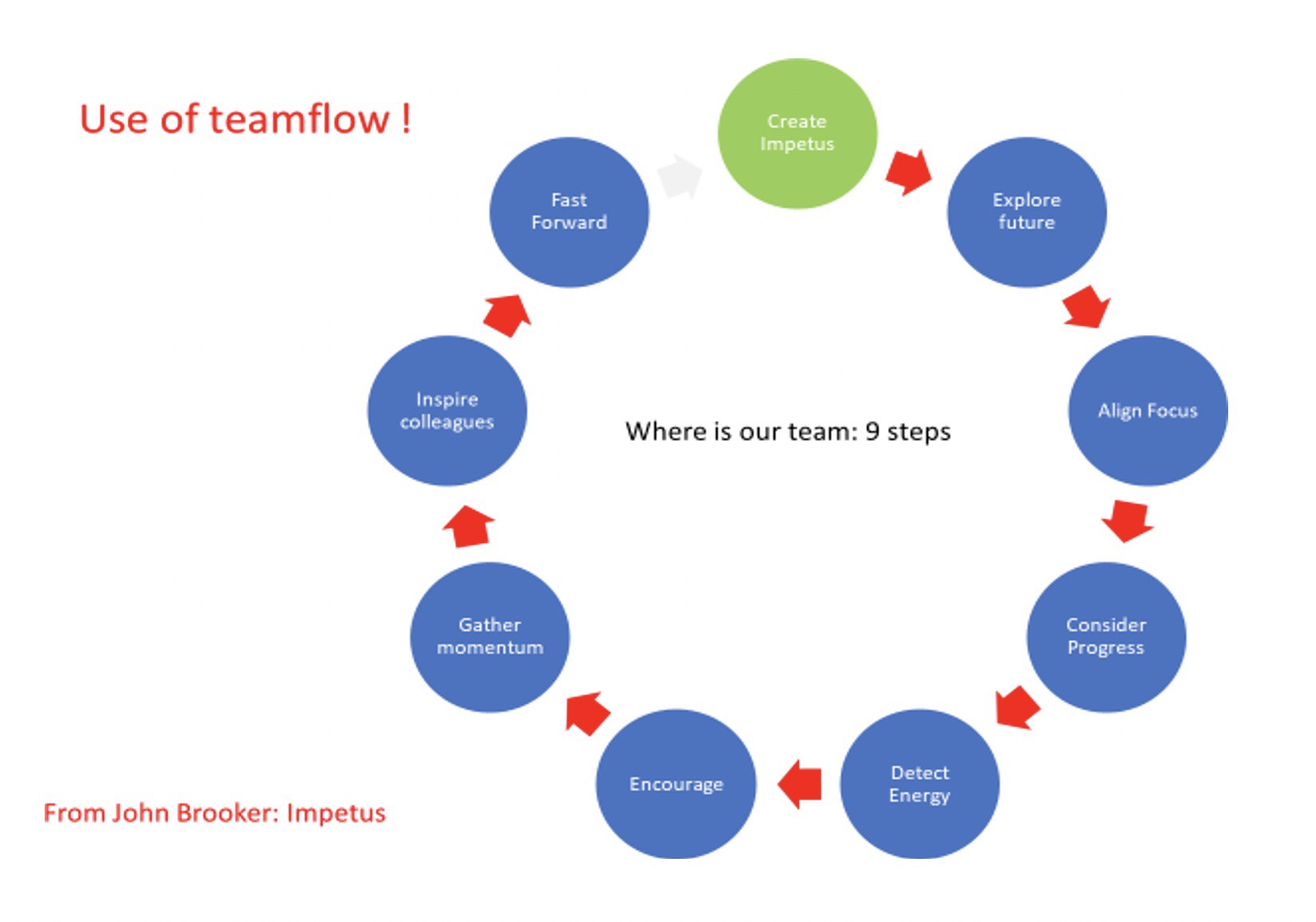
For me the Impetus Teamflow part is one of the most inspiring ways to stimulate teamflow in existing or new teams. On this project we used this pattern, although I know that John Brooker will publish a new book, in 2021, with more alignment and details for this kind of teamflow/ groupwork. This is what we did in this project. I use it very much in my work and find that it gives a lot of energy to all the teams I work with.
I can work it out here in more specific terms, but I do not think that that is needed to get the picture. In fact, we asked the group:
The outcomes of this all are presented in Section 3. Section 2 was about the working methods and the order and a summary of the way we did it.
Note: Working with Zoom makes the look and feel about teamflow more difficult. More energy arises when people meet and touch each other. It is more enriching than working in a Zoom meeting or Google Hangout. But for this moment we had to deal with these circumstances.
The outcomes and Results
In summary, here are two outlines about the outcome. The first outcome after the interviews, we found enthusiasm and a great willingness to participate on the creative and emerging process!
After the Workgroups we gained some more specific outcomes:
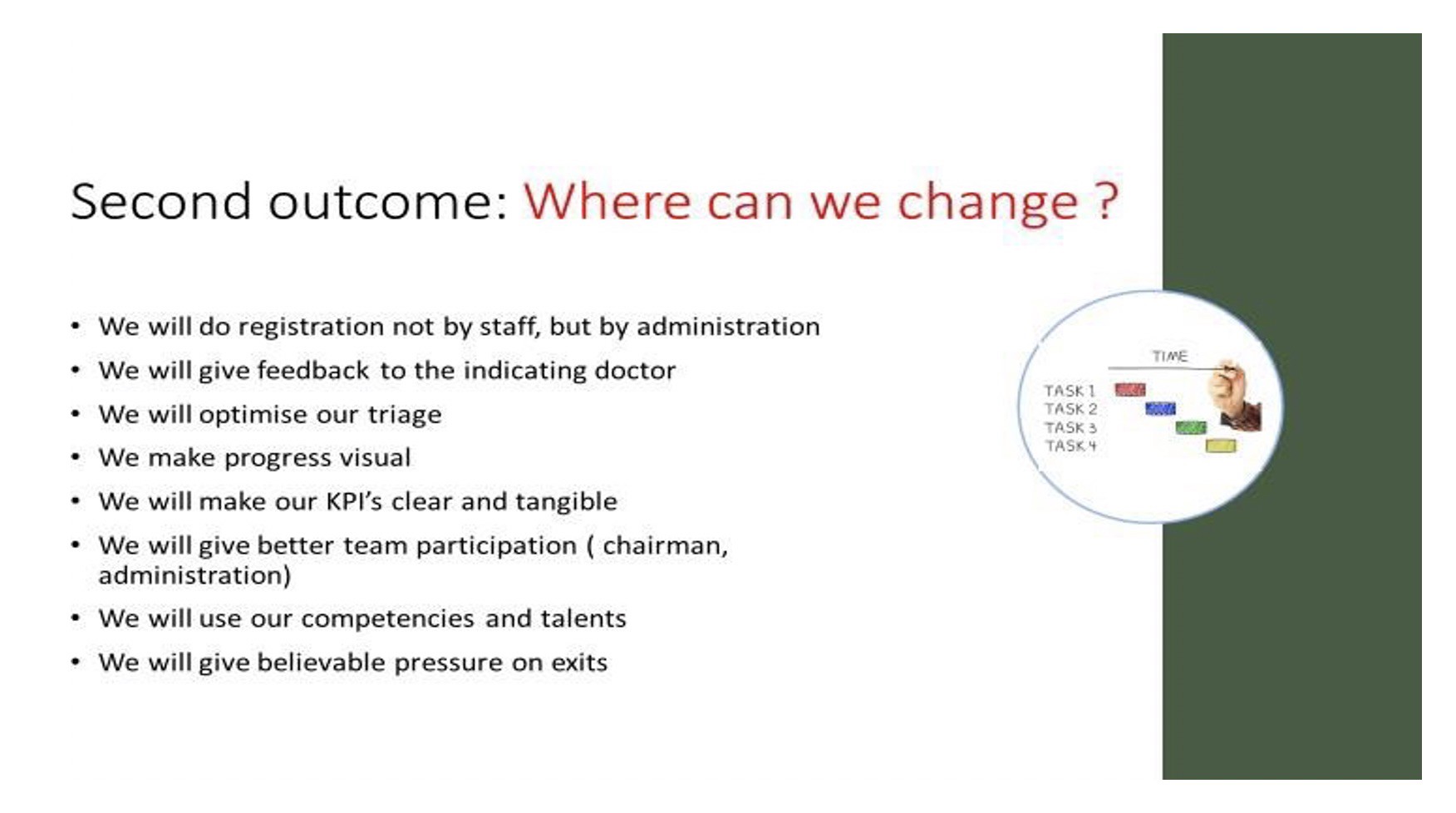
And then at the very end of Workgroup 3 we gained the last outcome:
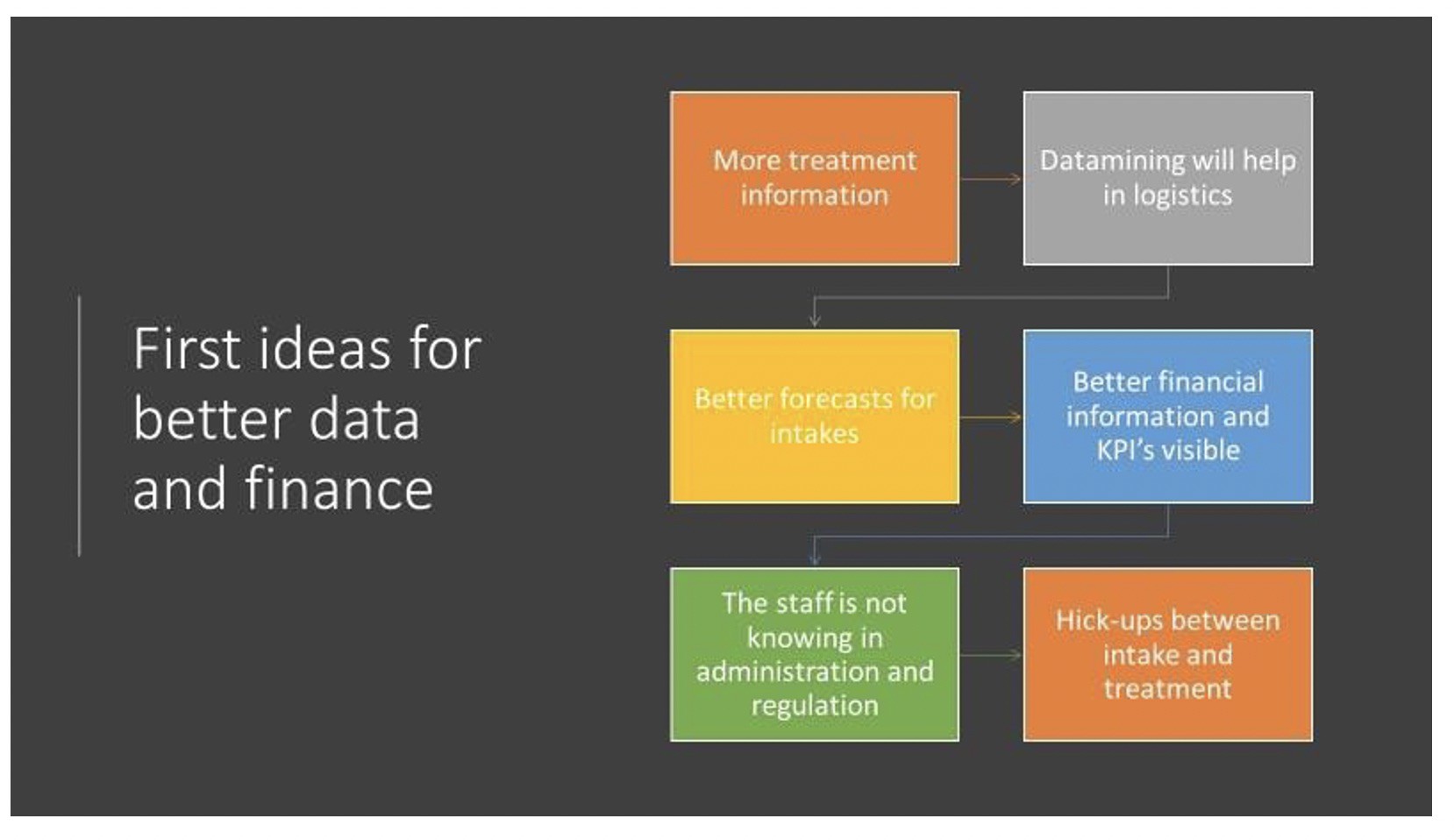
The answers and outcome are concrete already and in Phase 3 we will work on the most specific outcome and changes. The working path will be the same, of course. But in this stage we need now more support from our Lean and Sigma partners for a more specific view for the progress they want. This is not the topic of this Piece of Work and is currently being discussed with the Board.
In the third phase we will also have a closer look at Leadership, Strategy and a good method for continuous improvement. Our working path will remain solution-focused.
Outcome for the client(s); Feedback
In fact there were two client-parts. To start with:
A. The workers at MentalHelpers Ons Dorp (who were interviewed and questioned and were part of the workgroups There was real satisfaction with this process. They liked the appreciation, the outcome, the process itself. They were thrilled by the idea that so many choices became possible and that they were at the start of a real new horizon and future. A lot of energy and maybe even resilience became possible. In the evaluation form at the end of the workgroups they gave us figures from 8 to 10 for the process and the whole picture. And they wrote words like: “inspiring”, “better cooperation”, “new view on our teamwork” or “let us get things done”! We have the transcripts of all discussions available.
B. The team of the Central Department. They gave us the opportunity to focus on the Ons Dorp location. They were not questioned, they looked at the results. And they saw problems. Not in the outcome itself, but in the way they wanted this location to behave within the borders of the central firm MentalHelpers. At this moment we are still in discussion. We want to make a step forward to phase 3, but there is reluctance to do so. So the discussion goes on and we will let you know what the final decision will be! In evaluation: the difference between the workers on site and the central department is to large. We have to reduce this gap. In the next months, I am sure, more discussion will follow. This needs to be resolved. The feedback we got from the clients was this:
- Everybody liked the way we talked and questioned. It felt as a discussion, not as a rational, or more “blue” way of enquiry.
- At the start everybody feared the Zoom way of questioning and workgrouping. Yes, there was a disadvantage, but the process itself was good and satisfying.
- It was strange and good in one to feel the difference with the normal routines and dialogues within MentalHelpers.
- There was a lot of appreciation for the way we did it. Well-prepared but it did not feel as a formal or rational way to get the answers.
- The workgroups were more encouraging than everybody thought they would be. Some details about colleagues like their working style or habit were unknown for the others!
- There were many psychologists who told us, that this way of questioning could be very good for the patients (SF was really unfamiliar to them).
- Because I emphasised a lot on the patients' well-being and experience in the working routine of the company some shame arose. They told us: “we know the patients in their problems but not in their solutions!”
Discussion and Evaluation
The first I want to express on the whole process is a wow! Rob and I, together with Brainprofs and MentalHelpers Ons Dorp are very proud on the way we worked, the outcome in real results and the wonderful impact of the process on the team. We are very proud that we were able to develop the wish of the client in a way that was clear and inspiring. We realised the start of transformation and change for a whole location. We did know already but we showed it in concrete results that SF is a very good way to realise and to perform change. Less effort, less pressure, more smiles and more participation. Our lessons learned: The visible gap between the expectations of the Central Office and the local workers was a side-effect which we were not aware of when starting the project. It was very disappointing for our team to realise this so late in the process. We were possibly too eager to start the project. If we had done the preparation before together with the people of the central department, and if we had dealt with the differences with better SF interventions, including everyone, from the beginning, this outcome would have been unlikely. We will continue to work on optimising the working routines with the SF approach, offering:
- great support for change
- a clear and rich picture on the Desired Future
- a great commitment to progress and clues and future for the team
- a good look at the topics involved
- a lot of smiles for being appreciated and seen in their competency
- a good look on talents and resources
- proof that SF works! And to be honest, the results are embraced by the whole team, the medical staff as well as the secretaries, the nurse and the psychologist.
My last words
- Thanks to SFIO for offering me the chance to become a reviewed contributor. The writing of this Piece of Work is enriching and encouraging, even at my age (70 !)
- Thanks to MentalHelpers, MentalHelpers Ons Dorp and Menzis Health Insurance for offering this great chance to design this process and to co-create the wonderful results the project offered.
- Thanks to all my Brainprofs colleagues (in this case: Rob, Roland, Lucas, Michiel, Anton) for the good brainstorm and the promising remarks.
- Thanks to John Brooker and Annie Bordeleau and Ilfaro Leuven as the inspiring people to enlarge the SFIO thought. I hope that this Piece of Work is a proof of that.